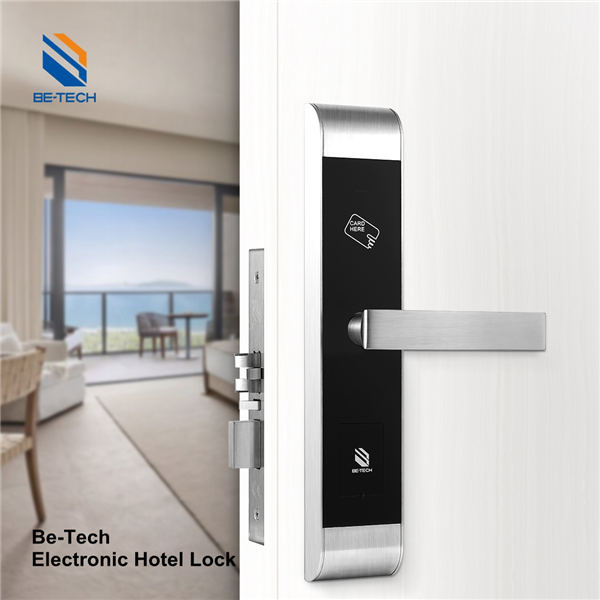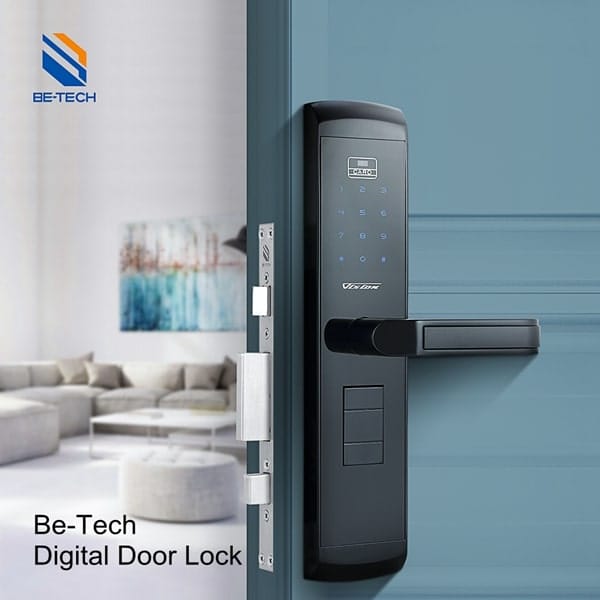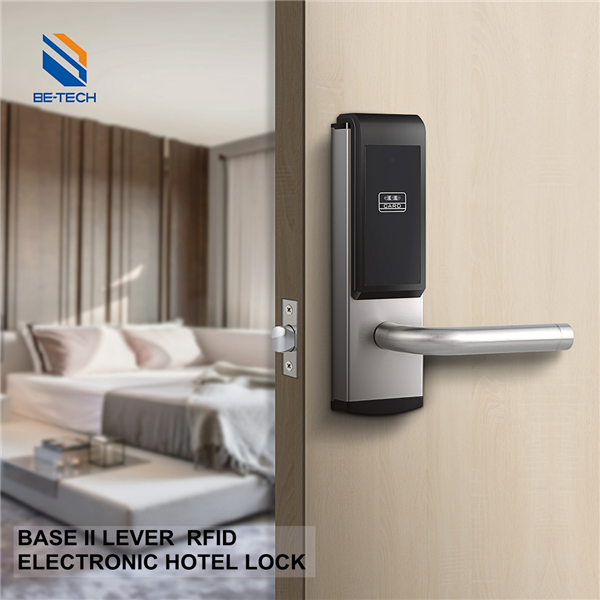Hotel security is a paramount concern for both guests and management. One often overlooked yet crucial component of hotel security is the door closer. Door closers ensure that doors close securely and consistently, enhancing safety, energy efficiency, and overall guest experience. This comprehensive guide will explore the various types of door closers, their benefits, and maintenance tips to ensure optimal performance.
Types of Door Closers
Door closers are essential hardware devices that ensure doors close securely and smoothly after being opened. They come in various types designed for specific applications and aesthetic preferences. Here’s an overview of the most common types of door closers:
Overhead Door Closers

Overhead door closers are widely used in commercial properties such as hotels and schools. They are mounted at the top of the door and come in several variations:
Regular Arm: Mounted on the pull side, this type features two arms—one attached to the frame and another to a spring-loaded box. Regular arm closers are known for their power efficiency and durability.
Top Jamb: Similar to regular arms but with the spring box mounted on the face of the doorframe. This type is often used for glass or aluminum doors due to their narrow top rails.
Parallel Arm: Mounted on the push side, this option is more aesthetically pleasing and less prone to vandalism, making it ideal for schools and commercial buildings.
Concealed Door Closers

Concealed door closers are hidden within the door or frame, providing a clean appearance. Available in hydraulic or spring-loaded versions, they are particularly suited for maintaining aesthetic integrity in hotel interiors or modern designs.
Floor Spring Door Closers

Installed in the floor, these closers are typically used for glass doors. They offer a sleek appearance suitable for upscale commercial properties and can handle heavier doors while providing high durability.
Surface-Mounted Door Closers

Surface-mounted door closers attach directly to the door frame with a bar along the back. They are easy to install, cost-effective, and come in various configurations including top jamb and parallel arm options. These types are often chosen for their practicality in both residential and commercial settings.
Electromagnetic Door Closers

Connected to fire alarm systems, electromagnetic door closers are commonly found in high-security areas or hospitals. They ensure that doors close securely during emergencies, preventing the spread of flames and smoke.
Selecting the right type of door closer depends on factors such as aesthetics, functionality, and specific building requirements. Each type offers unique advantages suited to different environments and needs.
Benefits of Door Closers
Door closers are essential devices that offer a wide range of benefits in various environments, particularly in commercial buildings and hotels. Below is a detailed overview of their key advantages:
Security Enhancement
Automatic Closure
Door closers automatically shut doors after they have been opened, significantly reducing the risk of unauthorized entry. This feature is crucial for exterior doors and sensitive areas, enhancing overall security by preventing intrusions.
Integration with Access Control
In facilities with access control systems, door closers ensure that doors latch securely after use, allowing locking mechanisms to engage properly. This functionality is vital for maintaining effective security measures within commercial spaces.
Energy Efficiency
Temperature Control
By ensuring doors close promptly, door closers help maintain indoor temperatures, minimizing the loss of conditioned air. This is especially important in hotels and other establishments where guest comfort relies on stable climate control.
Cost Savings
With improved temperature regulation, businesses can achieve lower energy bills as HVAC systems operate more efficiently without having to compensate for air loss through open doors.
Fire Safety
Compliance with Regulations
Door closers are critical for fire-rated doors, which must close automatically to contain smoke and flames during a fire. This feature protects lives and property by preventing the rapid spread of fire.
Emergency Preparedness
In the event of a fire, properly functioning door closers ensure that exits remain secure and accessible, facilitating safe evacuation while hindering the spread of smoke and fire.
Aesthetic Appeal
Concealed Options
Concealed door closers enhance the aesthetic appeal of interiors by eliminating visible mechanical components. This is particularly beneficial in high-end commercial settings like hotels, where design integrity is paramount.
Additional Benefits
Noise Reduction
Door closers control the speed at which a door closes, preventing slamming and reducing noise pollution. This creates a quieter environment, which is especially valuable in settings like hospitals or schools where noise control is important.
Durability
By managing how doors close, door closers reduce wear and tear on both the doors and their frames. This prolongs their lifespan and minimizes maintenance costs over time.
Accessibility
Many door closers are designed to comply with accessibility standards, making it easier for individuals with mobility challenges to navigate through doors without excessive force required to open or close them.
Door closers play a vital role in enhancing security, improving energy efficiency, ensuring fire safety compliance, maintaining aesthetic appeal, and providing additional benefits such as noise reduction and increased durability. Their significance in both residential and commercial settings cannot be overstated.
Maintenance Tips for Door Closers
Maintaining door closers is crucial for their smooth operation and longevity, as well as enhancing building security and energy efficiency. This guide outlines essential steps for effective door closer maintenance.
Regular Inspection
Conduct regular inspections at least once every month to identify signs of wear such as rust, loose screws, or damaged components. Promptly addressing these issues prevents further damage and ensures reliable operation.
Monitor the closing speed and latch speed settings regularly. Adjust these settings as necessary to comply with safety regulations, ensuring that doors close smoothly without slamming or leaving gaps.
Lubrication
Apply a high-quality silicone-based lubricant to all moving parts—hinges, arms, and pivot points—every three months. This reduces friction and minimizes wear on components, ensuring optimal performance.
Regularly clean the door closer using a soft brush or cloth with a mild detergent solution to remove accumulated dust and debris that can hinder functionality.
Adjustment and Tension Setting
Periodically check and adjust the tension settings of your door closer every six months. This ensures proper closing without excessive force or delay; refer to the manufacturer’s instructions for specific procedures.
Inspect the alignment of the door within its frame during these checks. Misalignment can cause undue stress on the closer, leading to premature wear.
Weather Sealing
Examine seals and gaskets every six months for signs of deterioration. Replace any damaged seals promptly to maintain insulation and weather resistance—critical in varying environmental conditions.
Ensure that no debris obstructs the door’s movement during operation; this can affect both performance and safety.
Professional Maintenance
Schedule professional maintenance annually with a qualified technician who can conduct thorough inspections. They can identify potential issues and perform necessary repairs beyond DIY capabilities.
Establish a maintenance schedule based on usage frequency; high-traffic areas may require more frequent checks compared to less-used doors.
By implementing these comprehensive maintenance tips, you can significantly enhance the functionality and longevity of your door closers while ensuring compliance with safety regulations. Regular attention will help prevent costly repairs and maintain a secure environment in your building.
Conclusion
Door closers are a vital component of hotel security, contributing to safety, energy efficiency, and guest comfort. By understanding the different types of door closers and implementing regular maintenance practices, hotel management can ensure that their doors function optimally, providing a secure and welcoming environment for all guests. For more information on selecting and maintaining door closers, consult with a professional locksmith or door hardware specialist.









